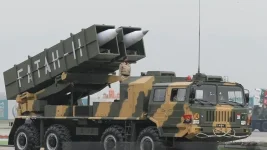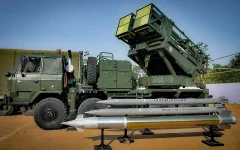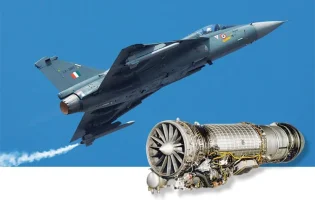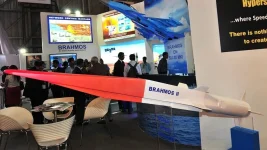- Views: 3K
- Replies: 21
Following the reported failure of its missile systems to penetrate India’s air defence shield during recent conflicts, Pakistan has approached China to acquire advanced hypersonic weapon technology.
According to sources, this move aims to counter India's increasingly robust and multi-layered defence network, with Pakistan intending to present any acquired technology as an indigenous development.
In recent skirmishes between the two nations, Pakistan reportedly launched its Fatah-I and Fatah-II missile systems, which are guided multiple rocket launchers. Alongside these, the Chinese-made CM-400AKG air-to-surface missile was also deployed from JF-17 Thunder jets.
The Fatah-I has a stated range of 140 km, while its successor, the Fatah-II, can allegedly strike targets up to 400 km away. The CM-400AKG has been marketed by its Chinese state-owned manufacturer as a hypersonic weapon, a claim now being questioned.
However, these projectiles were reportedly unable to breach India’s sophisticated air defence architecture. The system, which combines the Russian-origin S-400 Triumf, the jointly developed Indo-Israeli Barak-8 (MRSAM), and the domestic Akash missile system, proved effective at neutralizing the threats.
In a notable incident on May 10, 2025, a Fatah-II missile targeting Delhi was successfully intercepted by an Indian Barak-8 missile over Sirsa in Haryana, showcasing the system's operational readiness.
The ineffectiveness of these weapons has cast doubt on their capabilities, particularly the CM-400AKG. Claims made by Pakistani and Chinese state-run media outlets that the missile had successfully destroyed an Indian S-400 battery in Adampur, Punjab, have been officially denied by Indian sources.
Officials in India maintain that no S-400 system was damaged, suggesting that the performance of the Chinese-supplied missile may have been significantly exaggerated.
The primary motivation for Pakistan's new quest is the formidable challenge posed by India's air defences. The S-400 system, known for its ability to track up to 100 aerial targets and engage threats at a distance of 400 km, has created a near-impenetrable airspace. Pakistan’s current missile arsenal has demonstrated an inability to effectively bypass this advanced defensive layer.
In response, Pakistan has reportedly requested that China provide it with Hypersonic Glide Vehicle (HGV) technology. This technology is a core component of systems like China’s DF-17 missile.
An HGV is launched on a ballistic missile but then detaches and glides towards its target at speeds exceeding five times the speed of sound. Its ability to perform sharp, unpredictable maneuvers at low altitudes makes it exceptionally difficult for conventional missile defence systems to track and intercept.
Defence analysts believe Pakistan seeks either to purchase such a system outright or to co-develop it with Chinese assistance, likely rebranding it as a domestic project to enhance its national defence prestige.
This move is consistent with the long history of close defence cooperation between Beijing and Islamabad. China has been a primary supplier of advanced military hardware to Pakistan, including the HQ-9B and HQ-16FE air defence systems, and was a partner in developing the JF-17 Thunder fighter jet.
It is speculated that China could sell its DF-17 system to Pakistan, transfer the underlying technology, or potentially use an intermediary, such as North Korea, which has also reportedly benefited from Chinese HGV assistance.
Pakistan's pursuit of hypersonic weapons is a direct reaction to India's growing military capabilities. India's powerful air defence network, coupled with its own successful test of a long-range hypersonic missile in December 2024, has created a strategic imbalance that Pakistan is keen to address.






